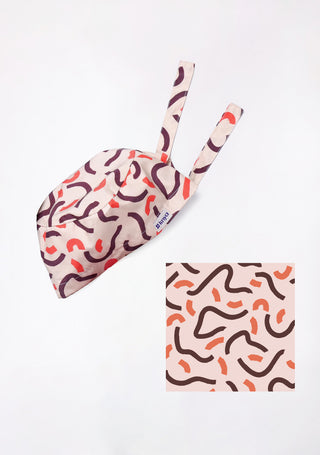The evolution of the stethoscope reflects the advancement of medical technology and diagnostic practices over the last two centuries. What began as a simple wooden tube designed to amplify body sounds has transformed into a sophisticated device capable of digital recordings, wireless connectivity, and noise-canceling features. The stethoscope remains an iconic tool in medicine, essential for diagnosing a wide range of conditions, and its continuous improvement promises to play an even more significant role in the future of healthcare.
The Birth of the Stethoscope (1816)
- Invention by René Laënnec: The stethoscope was invented in 1816 by the French physician René Laënnec. Laënnec, working at the Necker-Enfants Malades Hospital in Paris, was in search of a way to examine the chest without physically placing his ear directly on the patient's body. He fashioned the first stethoscope by rolling a sheet of paper into a tube, which allowed him to amplify heart and lung sounds.
- Initial design: The first stethoscope was a simple, monaural device, meaning it had only one ear piece. Its purpose was to help physicians hear internal bodily sounds more clearly, particularly those associated with the lungs and heart, marking a significant leap in diagnostic techniques.
- Early use in medicine: Initially, Laënnec’s invention was met with skepticism. However, it quickly gained popularity among medical professionals for its ability to provide clear, amplified internal sounds, particularly useful for diagnosing heart conditions, pulmonary diseases, and abnormal lung sounds.
The Binaural Stethoscope (1850s)
- Innovation by George Cammann: In the 1850s, American physician George Cammann improved upon Laënnec’s original design by creating the binaural stethoscope, which included two ear tubes. This upgrade allowed doctors to use both ears to hear sounds, providing a more detailed and accurate examination.
- Improvement in sound clarity: The binaural design amplified sounds even more effectively, making it easier for doctors to detect subtle variations in heartbeats, breathing patterns, and other internal sounds.
- Material advancements: Early stethoscopes were constructed from wood, which gave the device a rigid and heavy feel. Over time, however, rubber tubing replaced wooden parts, offering more flexibility and durability while reducing the weight of the device.
We believe you deserve the best. Shop our amazing selection of lab coats right here
Introduction of the Chest Piece (Late 19th Century)
- Advances in chest piece design: The chest piece, or diaphragm, is a critical part of a stethoscope that makes contact with the patient's body to pick up sound. In the late 19th century, doctors began experimenting with different materials for chest pieces, leading to the widespread adoption of metal and rubber diaphragms.
- Dual diaphragm functionality: The development of a dual diaphragm system – a flat side for higher-pitched sounds and a bell-shaped side for lower-pitched sounds – significantly enhanced the versatility of stethoscopes. This allowed healthcare providers to detect a broader range of bodily sounds and symptoms.
The Modern Stethoscope (20th Century)
- Mass production and global adoption: By the 20th century, stethoscopes had become standard issue for physicians worldwide. Mass production allowed stethoscopes to be distributed more widely, making them more accessible to a growing number of medical professionals.
- Improved ergonomics: As stethoscopes became more ubiquitous, ergonomic designs were introduced, such as soft ear tips, adjustable binaural tubes, and lightweight materials to increase comfort for healthcare providers during extended use.
- Material innovations: The introduction of high-quality materials, such as stainless steel, plastic, and silicone, made stethoscopes more durable, resistant to wear and tear, and comfortable to use. The flexibility of the tubing was also enhanced, allowing stethoscopes to be more adaptable to different environments, from emergency rooms to outpatient clinics.
Technological Advancements (Late 20th Century to Present)
- Electronic stethoscopes: The late 20th century saw the introduction of electronic stethoscopes, which amplified body sounds electronically and transmitted them to the physician's ear. These stethoscopes offered clearer sound quality, especially in noisy environments, and allowed for volume control and sound filtering.
- Digital stethoscopes with recording capability: Modern digital stethoscopes often come with the ability to record and store audio, enabling doctors to review a patient’s heartbeats or lung sounds over time. This technology also allows for the sharing of audio recordings between healthcare professionals, enabling better collaboration on diagnoses.
- Integration with telemedicine: The rise of telemedicine has led to the development of stethoscopes that can transmit sounds via Bluetooth to remote devices or healthcare providers, facilitating remote consultations. These stethoscopes have opened up new possibilities for diagnosing patients in rural or underserved areas.
Ready to explore our amazing scrubs collection? Browse the best here.
The Stethoscope in the 21st Century
- Miniaturization and portability: Stethoscopes have become more compact and portable over the years. Advances in materials and design have made modern stethoscopes lighter, with some models weighing less than a quarter of a pound. This allows for easy transport in emergency situations or when doctors are making rounds in hospitals.
- Enhanced acoustic technology: Some modern stethoscopes are equipped with noise-cancelling technology, providing enhanced clarity of bodily sounds even in busy environments such as hospital wards or crowded clinics. Advanced acoustic filters allow healthcare providers to focus on the specific frequencies of interest, such as heart murmurs or lung crackles, while minimizing background noise.
- Customization for specialties: Specialized stethoscopes have been developed to cater to specific medical fields. For example, pediatric stethoscopes are designed with smaller diaphragms and softer tubing to make it easier for doctors to examine children, while cardiologists often use stethoscopes with enhanced capabilities to detect heart murmurs or abnormal rhythms.
Ready to personalize your practice? Explore our new 6sense Stethoscope collection, now available in three beautiful color options.
Future Trends and Innovations
- AI-powered stethoscopes: The future of stethoscopes is likely to involve further integration with artificial intelligence (AI). AI-powered stethoscopes could potentially diagnose certain conditions based on the sounds they detect, alerting healthcare providers to irregularities before they may otherwise be noticed.
- Wireless and cloud integration: Wireless stethoscopes, which transmit patient data to cloud-based platforms, may become increasingly popular, allowing doctors to access and analyze patient data from any location. These stethoscopes could be used in conjunction with other medical devices to create a more complete picture of a patient's health.












